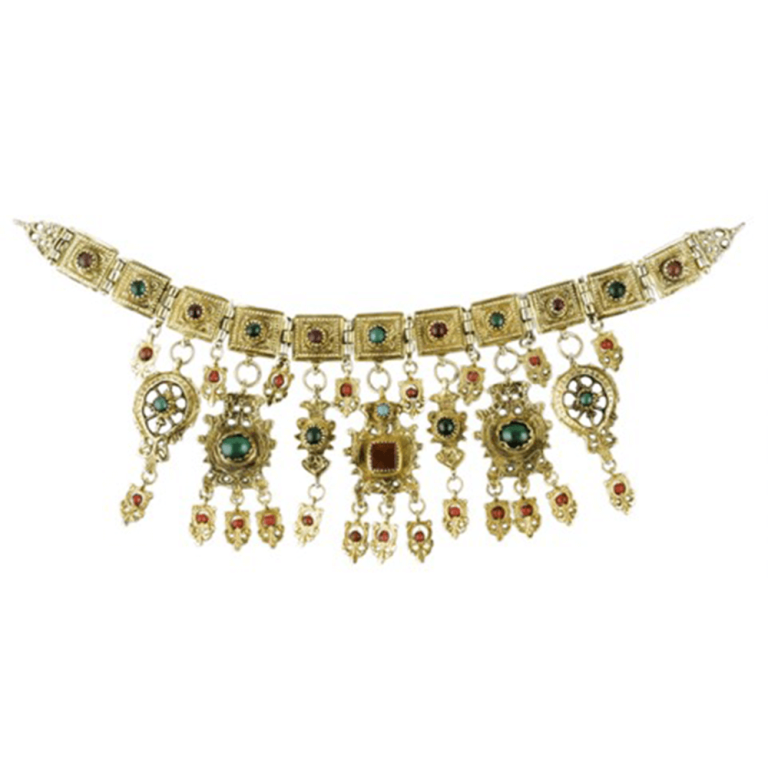Harchali (jewellery)

Harchali (jewellery)
Origin
Ioannina
Period
19th century AD
Material
Silver, gold plated
Description
Silver gilt "harchali" from Epirus, collars decorated with agates and artificial colored stones, late 19th - early 20th century. Athens, Museum of Greek Folk Art. For the neck and chest were intended large necklaces, jordania, with rows of coins, the harchalia, gilded heavy, with chain fittings and colorful stones, which fixed them on the fabric of the clothes (around the neck or on the shoulders), with two hooks on the edges of the jewelry, as well as necks, rows of chains with hanging coins and tetrads, and even crosses (engraved with religious representations) and oval buttons, cast and wired, with grainy decoration, linked together by a chain, with a rather decorative use, since the practical need was served by the hooks of other mystical jewels. The long siguni (or sagiaki) of Zitsa has, as a peculiar decoration, two rows of large pointed gilt buttons, the two scales buttons, as they were called, with twelve buttons of each scale, sewn into a chain, which is hooked vertically to the edges of the siguni, in front of the chest. In Pogoni, the jacket of the festive costume also has twelve to fifteen large silver buttons.
